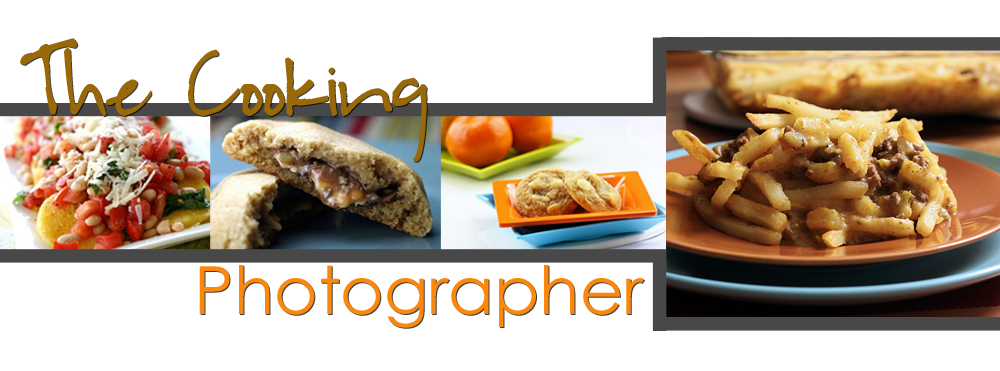So here I go. It's just a start, but there will be many more thoughts to come. This will be random for awhile.
Photography Stuff
1. Relax and have fun with food blogging and photography. This is a giant learning experience and it's important you allow yourself mistakes. (I make a lot of them!)
For me, I come from a professional news photography background and I once swore to myself I'd never take food pictures. I knew how to take pictures of people, but food shots were not natural to me and my images were terrible for a long time. Practice made them better. Visiting and getting to know the food pros helped a ton. Oh, and I'm still learning like crazy and feel like I'll never know this medium well enough.
We all come from different backgrounds with different strengths and weaknesses. My weakness is writing and it often shows, but I'm working on it.
2. Consider getting a macro lens for your camera. It will help a lot with food. I shoot with several lenses, but most often my 50mm macro.
3. Learn to edit your images in a photo editing program if you're not doing so already. The pros always clean up their work. Granted, air brushing a chocolate cake probably isn't called for, but just a little bit of work to make things pop helps.
4. I don't believe food photography has to be shot all in high key. To do so is taking art and making it one-dimensional. High key is fine, but so is every other style of shooting out there. The more we push this art forward the more we gain. I may not always get my work on food sites or in magazines because of this belief, but that is ok. Although more often than not, I do.
This doesn't mean we should not master the basics of photography, but once we do we should be free to become our own Picassos.
5. In photography, we take a three dimensional situation and turn it into a still, flat two dimensional image. Because of this, movement needs to be conveyed through tension and shapes. Diagonals and spirals help us feel movement in an image and things like pour shots, messes and precariously balanced dishes create tension. Both ideas can help draw the eye to your photographs.
 6. Use the Rule of Thirds when composing photographs. Basically, you want to envision a nine square grid when composing your shots. Instead of placing the food in the middle of the shot, you want to place it on or across the dissecting lines or in boxes around the perimeter.
6. Use the Rule of Thirds when composing photographs. Basically, you want to envision a nine square grid when composing your shots. Instead of placing the food in the middle of the shot, you want to place it on or across the dissecting lines or in boxes around the perimeter.This important compositional rule doesn't typically apply when you fill the shot completely with an item, but for most shots it does. The main goal of this rule is to keep your food/subject from only sitting in the middle box.
7. White Balance: Learn to white balance your camera by reading the manual. White balancing in simple terms is matching the color temperature of the light around you to the sensors in your camera. Auto white balance nowadays can work pretty well, but your photos will be much better if you learn this simple technique.
8. Years ago, I had an old photography professor beat into my brain that I must remember I was taking pictures of light, not just a subject. Everything we see is light, and if we remember to use the light we're capturing along with our subjects then our photographs will work out. Sage advice from a great professor.
9. Always bracket your shots at least a half stop in both directions. If you're new to this concept, it's simply underexposing and overexposing your shots by at least a half stop to ensure your images are properly exposed. See exposure or bracketing in your camera manual for instructions on how to do this with your camera.
Food Styling Ideas
1. For tan colored foods, pick a solid brightly colored plate to show them off. Tan and white often get lost together.
2. Too much fuss in the background can take away from the focus of your shot, the food. Make your food center stage.
3. Color holds a great deal of emotional power. Colorful dishes, napkins and tablecloths can help communicate better what you're trying to convey about your food. Thinks spicy reds, girly cute pinks, peaceful blues, organic greens and bright happy kid friendly yellows. Pale colors for calm, bright for energy and so on.
4. See Rule of Thirds above in Photography Stuff. This rule often applies to styling as well as shooting.
Blog Thoughts
1. If you want to attract both males and females to your blog keep the colors gender neutral.
2. Always try to be kind and keep your ego in check. The blogging world is smaller than we realize and a bad reputation can follow you.
3. If possible, it helps to leave comments on other blogs. Besides the strength of social networking, you never know when you'll make a new friend for life.









